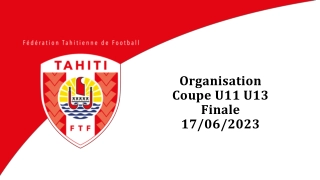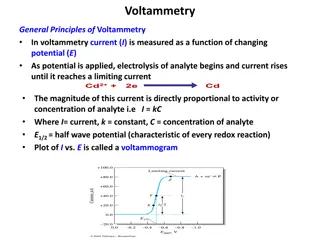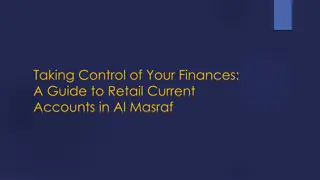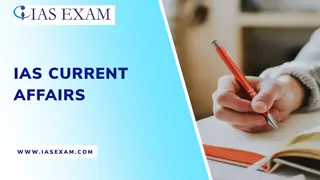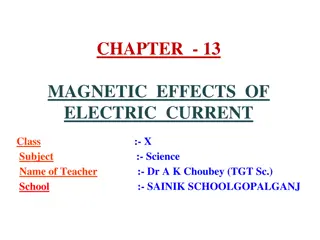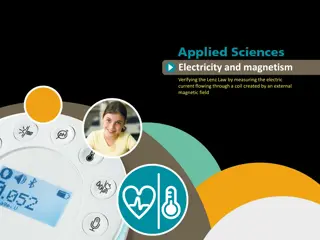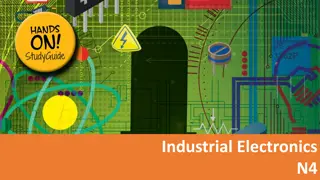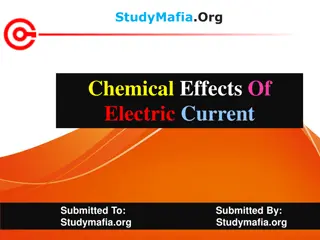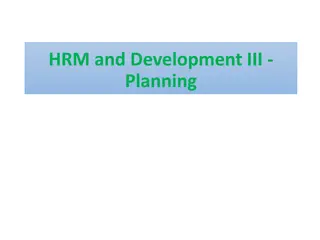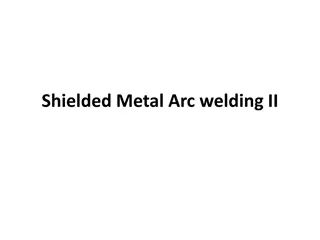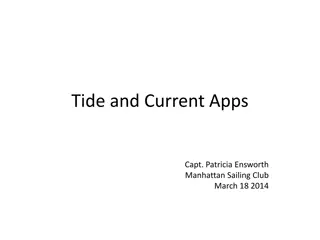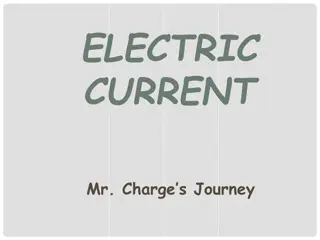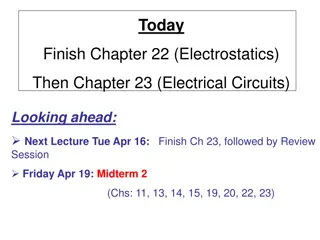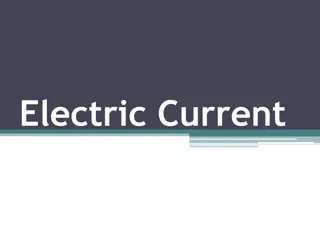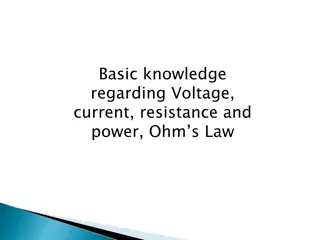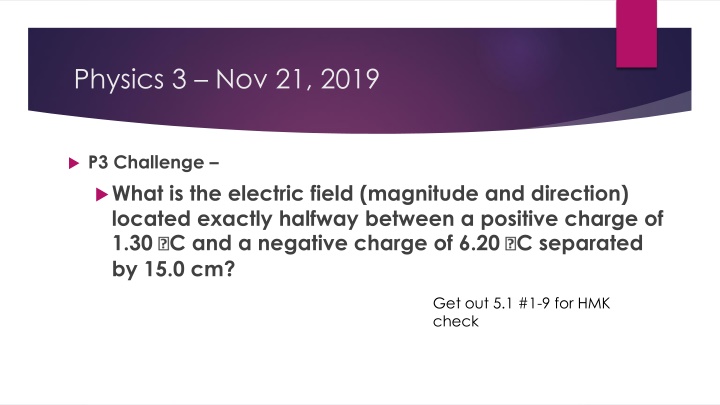
Electric Fields Between Charges: Calculation Challenge
Explore the concept of electric fields by calculating the magnitude and direction between a positive and negative charge at a specific distance. Learn about electric potential energy and electron drift in a detailed physics discussion.
Download Presentation

Please find below an Image/Link to download the presentation.
The content on the website is provided AS IS for your information and personal use only. It may not be sold, licensed, or shared on other websites without obtaining consent from the author. If you encounter any issues during the download, it is possible that the publisher has removed the file from their server.
You are allowed to download the files provided on this website for personal or commercial use, subject to the condition that they are used lawfully. All files are the property of their respective owners.
The content on the website is provided AS IS for your information and personal use only. It may not be sold, licensed, or shared on other websites without obtaining consent from the author.
E N D
Presentation Transcript
Physics 3 Nov 21, 2019 P3 Challenge What is the electric field (magnitude and direction) located exactly halfway between a positive charge of 1.30 C and a negative charge of 6.20 C separated by 15.0 cm? Get out 5.1 #1-9 for HMK check
Physics 3 Nov 21, 2019 Objective: Agenda: Current Electron drift Potential difference 5.1 Electrostatics, cont Assignment: p205 #10-14
Current Moving charges within a medium creates a current. Current is measured as a rate of transfer of charge per time. Symbol: I Unit: Ampere, A 1) Positive charge moves in the opposite direction as electrons 2) A charge can move faster than actual matter can move. 3) The only thing that physically moves to transfer charge is the electron. Positive charge is the absence of an electron. Q = I t Demo dancing everyone! 1 A = 1 C/s (SI base unit)
Electron Drift So how fast do the electrons actually move? = Electron drift, v Distance across a given segment of wire = vt The volume of the cross section is the cross sectional area A times the length or = Avt If there are n electrons in a given volume (#electrons/m3), the number of electrons in the volume is = nAvt Q is created by n electrons, each with q charge, so Q = nqAvt Current is the charge that passes in a given time I = Q/t I = nqAvt/t I = nqAv v = electron drift speed I = current, n = number of e/m3 A = cross sectional area of the wire
Electron Drift calculation How fast are electrons moving in a copper wire with a diameter of 1.5 mm when a current of 0.350 A is applied? Density of copper is 8.96 g/cm3. (Assume about 10 electrons per copper atom are available for metallic bonding.) Compare this to the speed of charge on the wire which travels at the speed of light, nearly instantaneous.
Electric Potential Energy The electric force is a conservative force so there is a potential energy that corresponds to the opposite of the work done by the conservative force. Thought Experiment 1: Consider a tiny positive test charge is infinitely far away from an isolated positive charge at the origin. This has 0 electric potential energy. (No force) As the charge moves closer to the charge (-x) , it is more and more repelled and the electric force (+F) is doing negative work. The charge therefore is experiencing a positive potential energy change. Positive charges are at a high potential energy for a positive test charge Analogy to a marble at the top of a hill.
Electric Potential Energy Thought Experiment 2: Consider a tiny positive test charge is infinitely far away from an isolated negative charge at the origin. This also has 0 electric potential energy. (No force) As the charge moves closer to the charge (-x) , it is more and more repelled and the electric force (-F) is doing positive work. The charge therefore is experiencing a negative potential energy change. Negative charges are at a low potential energy for a positive test charge Analogy to a marble at the bottom of a valley
Electric Potential Energy The work done by the electric force as the positive test charge, q, is moved to a position r away from a positive charge, Q is equal to r times the force ???? ?? = ? ??? ?? = ??? ? actually: ? = ?? Because both charges are positive and repel each other, the work done by the electric field during this move is negative. or W= ??? ? Potential energy is the opposite of the work done by a conservative force, The potential energy is the U = ??? ?
Electric potential The potential energy per unit charge is known as the electric potential Analogy is looking at just the hill or valley without the marble. Potential corresponds to height relative to some reference 0, and voltage is a difference in heights. V = ?? ? and is measured in volts. W = QV 1 V = 1 J/C Electric potential is to electrical potential energy as height is to gravitational potential energy. The positive test charge is akin to the mass. Negative test charge (like an electron) reverses the signs.
Electric potential Positive charges create a relative high potential state. Negative charges create a relative low potential state. Moving from a lower to a high potential is a positive voltage. Just like height, the word potential can refer to both a fixed state and a difference in states. Wherever there is an electric field there will be a potential difference. https://www.youtube.com/watch?v=m4jzgqZu-4s Watch first 15 seconds.
The electron Volt (eV) Because electrons are so small, the associated energies are very small, much smaller than a J. 1 eV is the energy of one electron charge over 1 volt 1 eV = (1.6 x 10-19 C) (1 J/C) 1 eV = 1.6 x 10-19 J If you get a very small amount of energy, convert to eV. Or you may be given information in eV.
Exit slip and homework Exit Slip What is the electron drift speed for a 1.25 mm diameter aluminum wire carrying a 230 mA current? The density of Aluminum is 2.70 g/cm3, the molar mass of Aluminum is 27 amu, and 3 electrons per Al atom are available for metallic bonding. What s due? (homework for a homework check next class) P205 # 10-14 What s next? (What to read to prepare for the next class) Read 5.2 p 207-226

